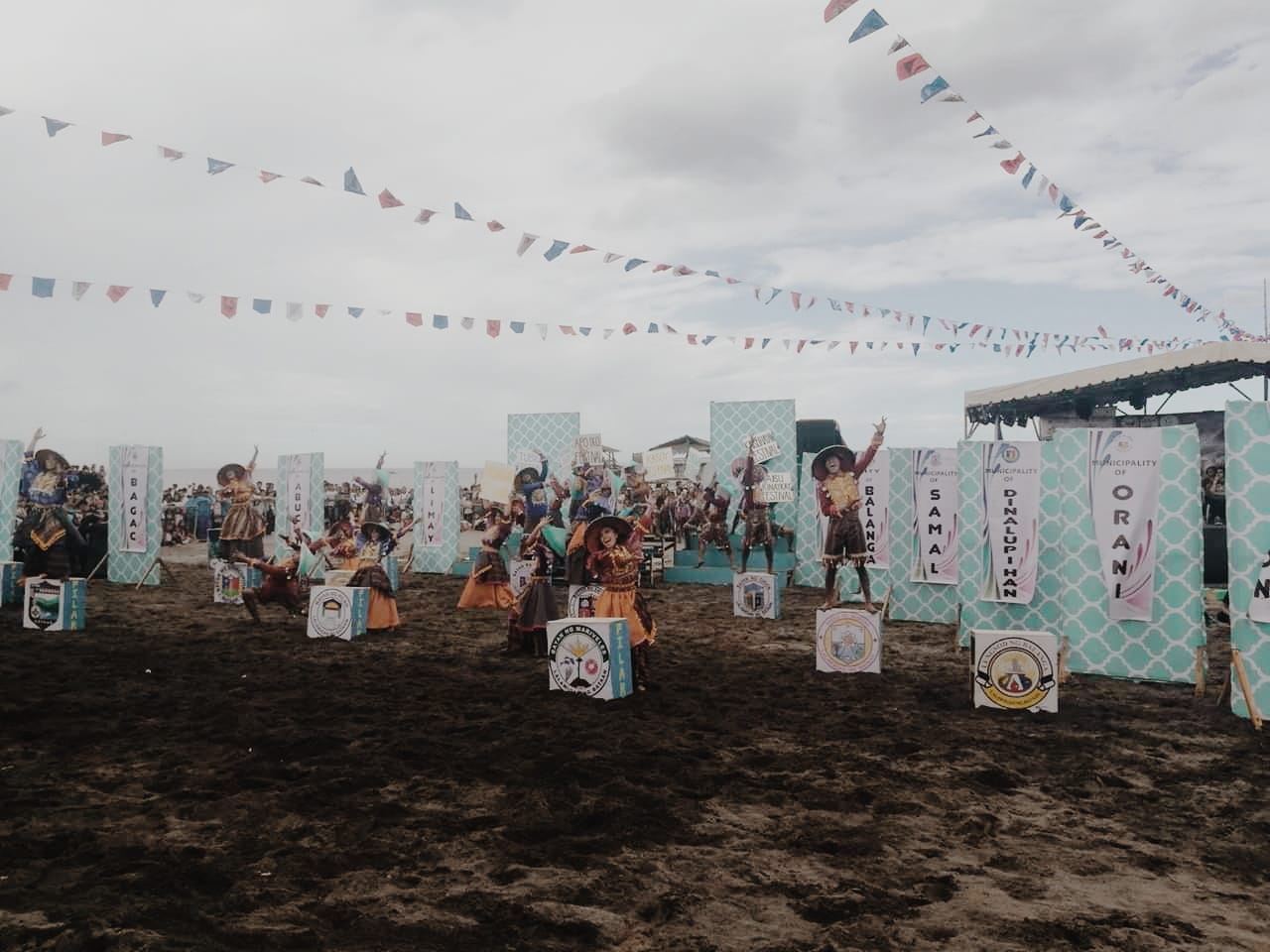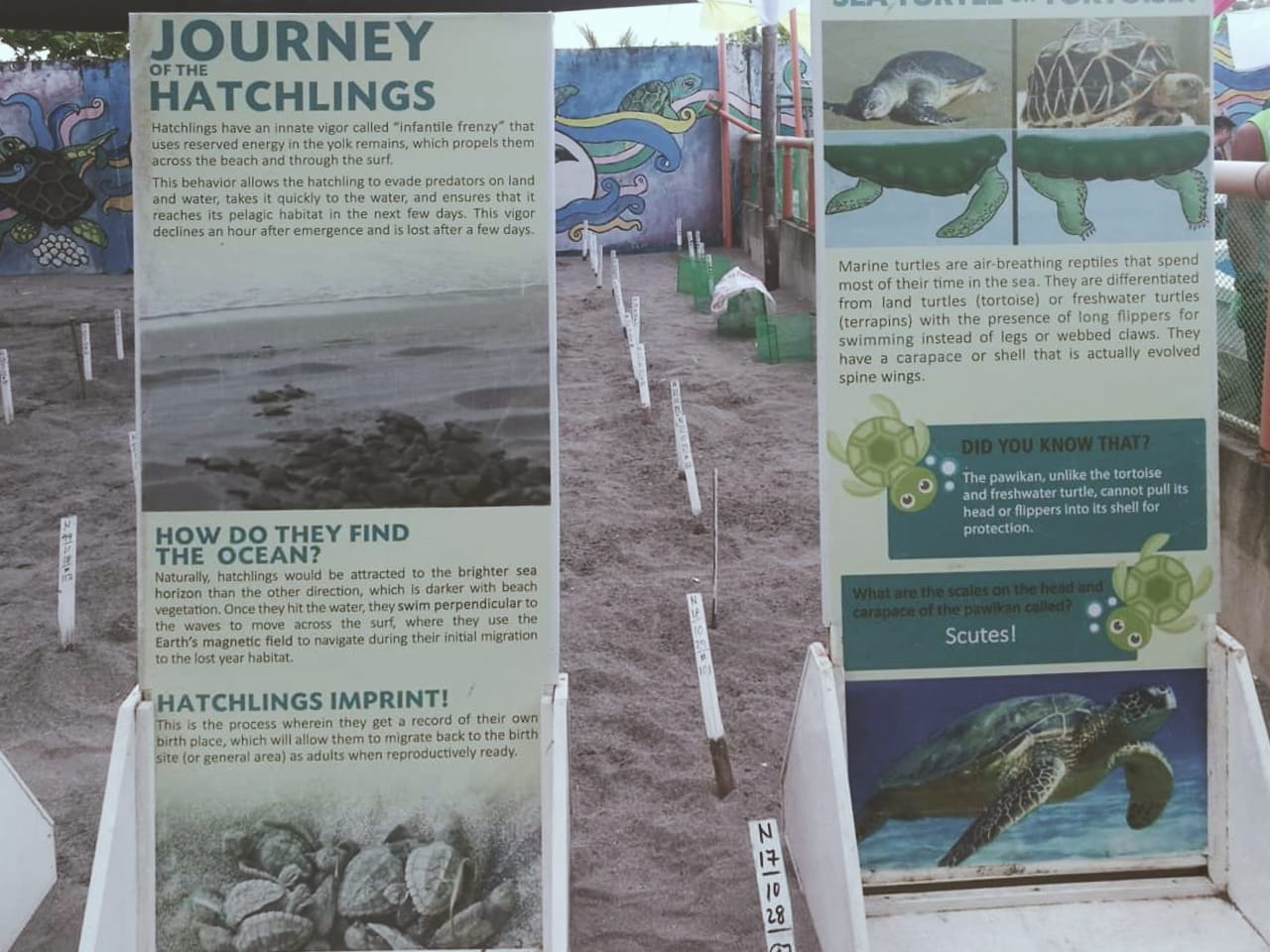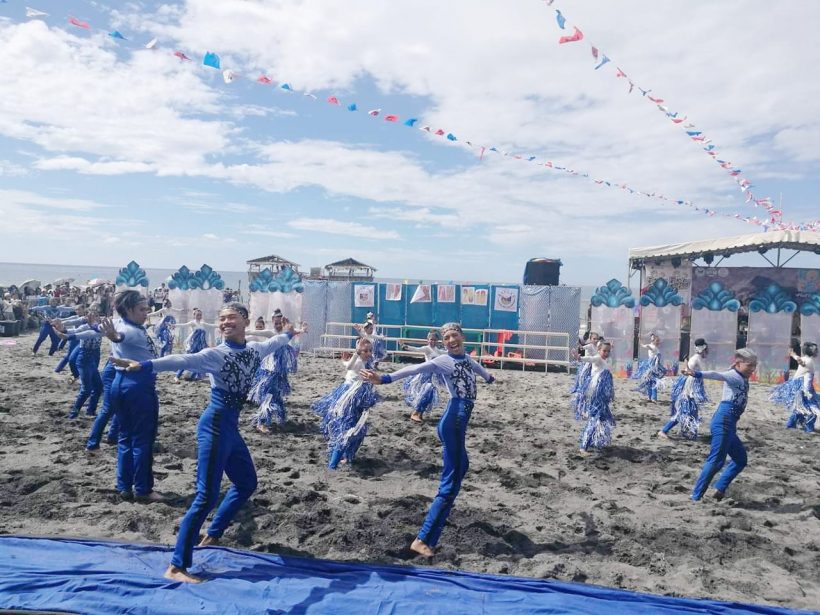Together with a few other bloggers, I got the chance to participate in the Pawikan Festival. It’s an annual event held at the Pawikan Conservation Center in Morong, Bataan.
Every year, the local government invites thousands of visitors and students to promote awareness of their pawikan conservation efforts. Those who join the festivities are treated to street dancing, music and art exhibits, and a showcase of local products. More importantly, they get to witness the hatchlings go back to the sea.

Several towns joined the street dance competition
Why it Matters
An endangered species, pawikans may soon go extinct.
But why does it matter to you?
Pawikans form part of two ecosystems – the marine system and the beach or dune system. Every single part of the ecosystem matters. Losing the pawikans will affect not only marine life, but us humans as well.
To illustrate – the sea floor is covered with lush green leaves called seagrass, which provides food and shelter to marine animals, maintains water quality, and stabilizes sea bottoms. Without this grass, many marine animals will go extinct. This means less seafood for humans to harvest.
The pawikans are instrumental in keeping seagrass beds healthy. To maintain its nutritional value and productivity, seagrass needs to be cut. One of the few species that eat grass, pawikans are able to perform this function. Their waste also fertilize the seagrass beds.
Unaware of the ramifications, pawikan poachers used to take the eggs to eat. Because of the conservation programs, these poachers have been transformed into volunteers. They now help prevent the eating of pawikan eggs, and are actively helping run campaigns not just for people in Bataan but for everyone elsewhere in the Philippines and the rest of the world.
Night Patrol
The conservation center starts welcoming visitors the night before the festival. They give out a series of talks to raise awareness and keep visitors entertained with musical performances, as they wait for the night patrollers to return with reports of turtles giving birth.
We were able to join the night patrollers as they walked the long stretch of beach in search of turtles. In spite of the long and arduous walk, we didn’t have any luck finding turtles. We returned to the center where a warm soup was waiting to provide some comfort.
Imprinting
Pawikans practice imprinting. They have what appears to be an inbuilt compass that directs them back to the area where they were born. They mate on the same beach they hatched decades ago.
Turtles lay around 40 to 190 eggs. These eggs are being brought to the hatchery to increase their chances of survival. They are buried deep in a 30-inch pit, which is further protected by a cylindrical mesh to keep predators away.
25-30 onwards, these same hatchlings are expected to return to their nesting grounds to lay eggs, continuing the cycle. Sea turtles never go to a different nesting ground to repopulate, making the maintenance of coastal areas highly important.

The Hatchery
The hatcheries protect baby pawikans from predators, such as ants, reptiles, and poachers.
The baby pawikans hatch from their nests after 40-75 days. They are then released right after they come up from their nest. The releasing of baby turtles are done wither after sunset or before sunrise to minimize the threats.
The pawikan’s sex depends on the temperature of the sand. A difference of 4.5 degrees Fahrenheit can result to an all-female or all-male batch. The males are placed in shaded areas while the females are in direct sunlight.
Even with the aid of the conservation center, pawikans have only 1% or less survival rate. This means that out of 100 hatchlings, only one or less will make it out alive.
So how can you help?
- Don’t buy or sell any pawikan (dead or alive), its eggs, meat, or any other by products and derivatives
- Immediately report illegal activity against pawikan to law enforcement agencies or the nearest local DENR Office, Wildlife Resource Division, Biodiversity Management Bureau.
- Stop destructive fishing practices
- Keep our beaches and marine waters clean
- Support local pawikan conservation initiatives–consider volunteering!
- Establish a network and participate in marine turtle sightings survey in your locality
For more information on how you can help, contact the Bataan Tourism Facebook Page.
Author: Tahna de Veyra
Voracious eater. Coffee dependent. Book sniffer. Music addict. Profound thinker. Certified ambivert. Life-hungry maverick. Nonchalant realist. Hesitant blogger.

